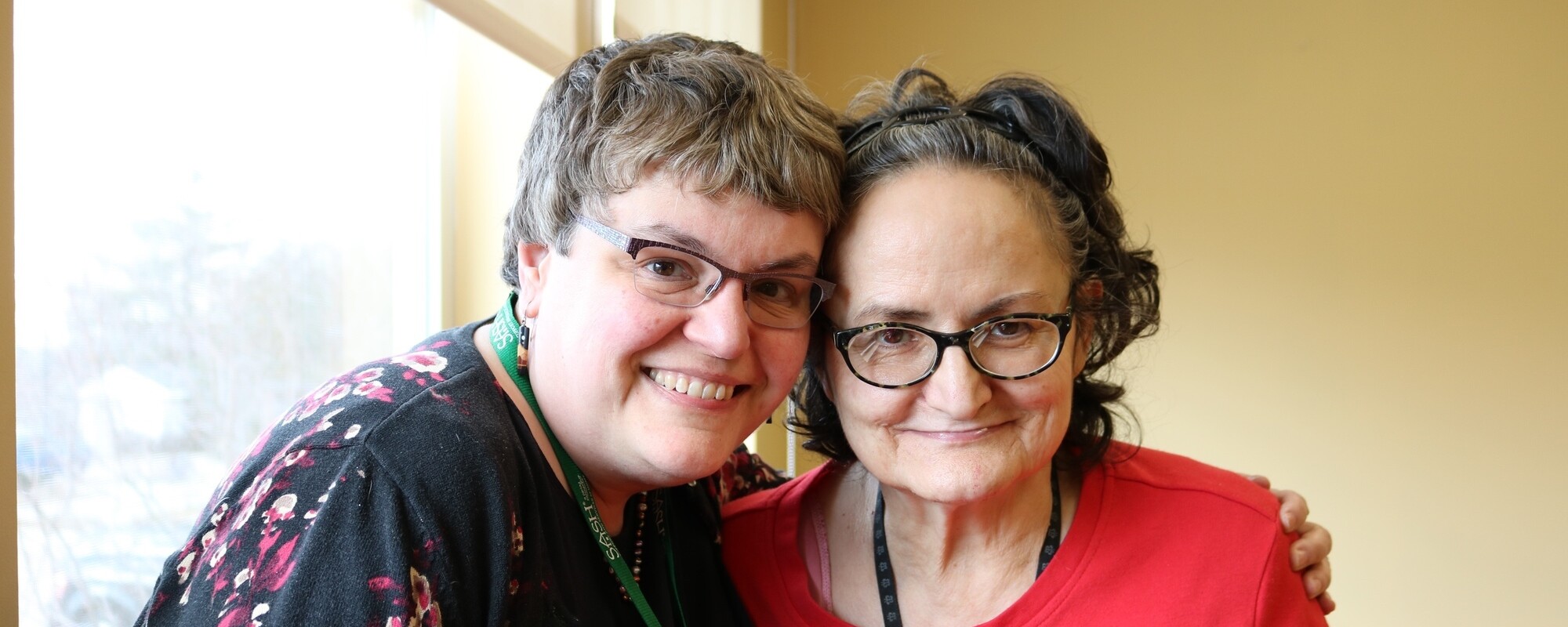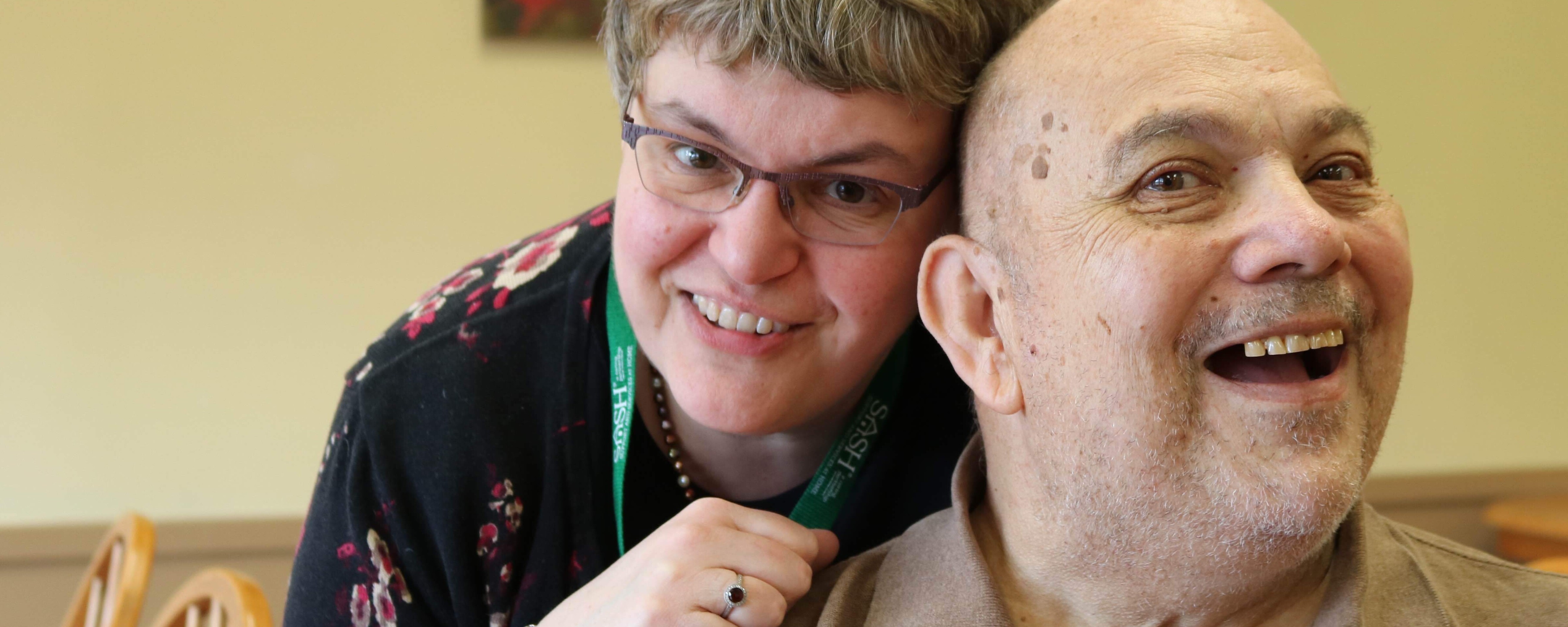
Our Stories
SASH works hard to provide senior care services that promote healthy living at home. Our participants often have success stories to share about how they've been able to maintain their health and independence thanks to the program. We're always so thrilled to hear these stories and we love sharing them with others! Here are a few of our success stories.
Tai Chi Success Story
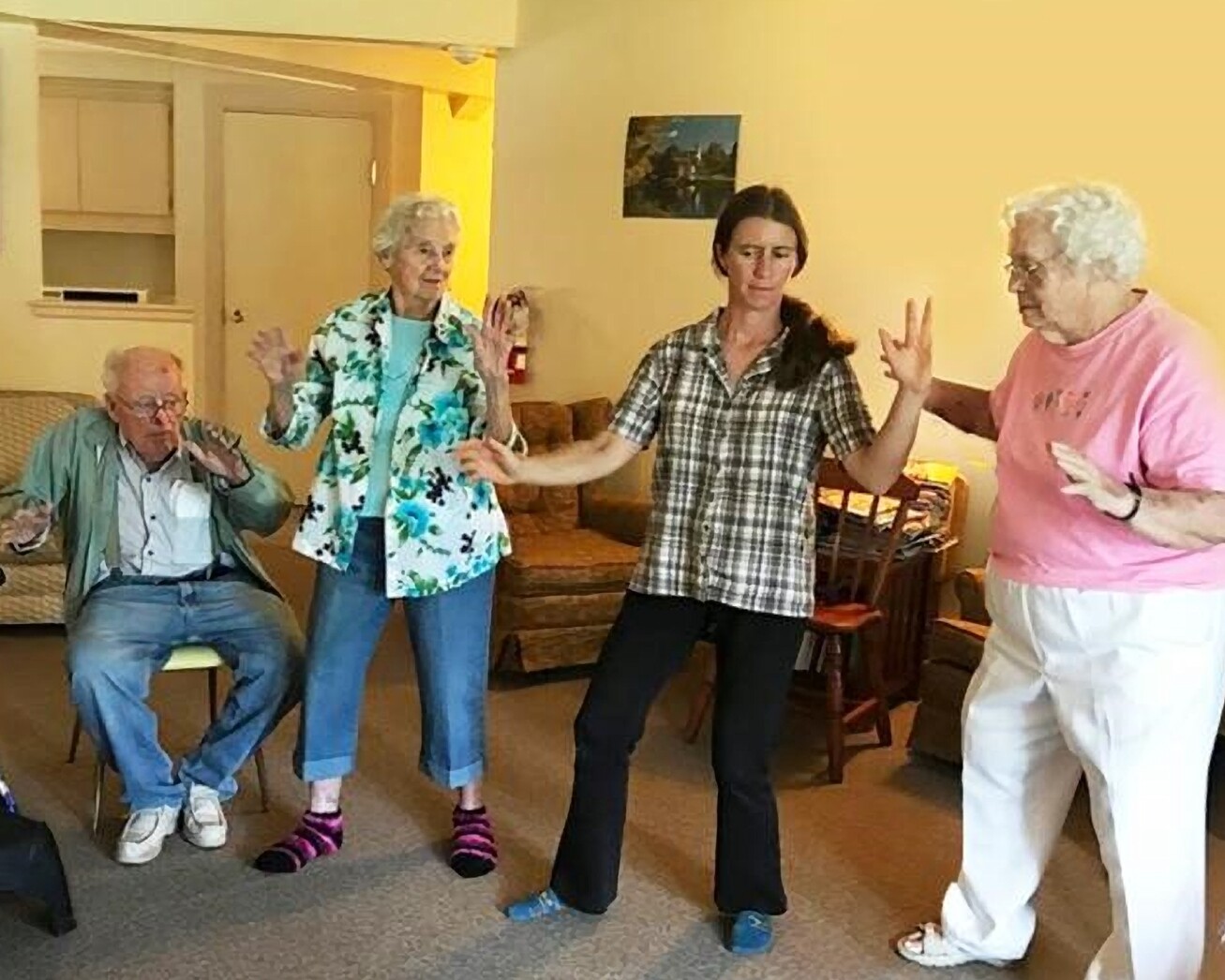
Exercise commitment—and results!—in the Northeast Kingdom
I'm sure the classes we teach help prevent falls, but even more than that, they provide social interaction, improve resilience, and speed recovery.
That's how Casey Doerner, SASH assistant director and a former SASH wellness nurse in Vermont's Northeast Kingdom, describes what she witnessed with her participants. Every week, she and SASH coordinator Kim Russell taught two exercise classes based on the "Eat Smart Stay Strong" curriculum and one Tai Chi class for their SASH participants. Here's how Casey described their success:
The most significant result I saw every week was a group of older Vermonters exercising and enjoying themselves! They were proud to tell their doctor and family that they went to exercise class, and many of them prioritized the classes.
In one of our sites, we started the class after running the six-week "Eat Smart" program, and everyone wanted to keep doing the exercises. Two and a half years later, everyone still came! During that time, two women fell and broke their hips; each had a surgical repair, rehab, and physical therapy. Both were surprised to learn they already knew the PT exercises the rehab therapist instructed them to do, which sped up their recovery.
At another site, we worked for six months to convince the residents to join SASH. When we mentioned we could provide an exercise class in the community room, three new people immediately joined. The group included one person who was 101 and two who were 99.
Nine months into our SASH Tai Chi group, participants were already reporting increased balance and strength. One 99-year-old participant attended every class and practiced daily at home until she was hospitalized for ten days. After her release, she was back in class within two weeks.
Diabetes Success Story
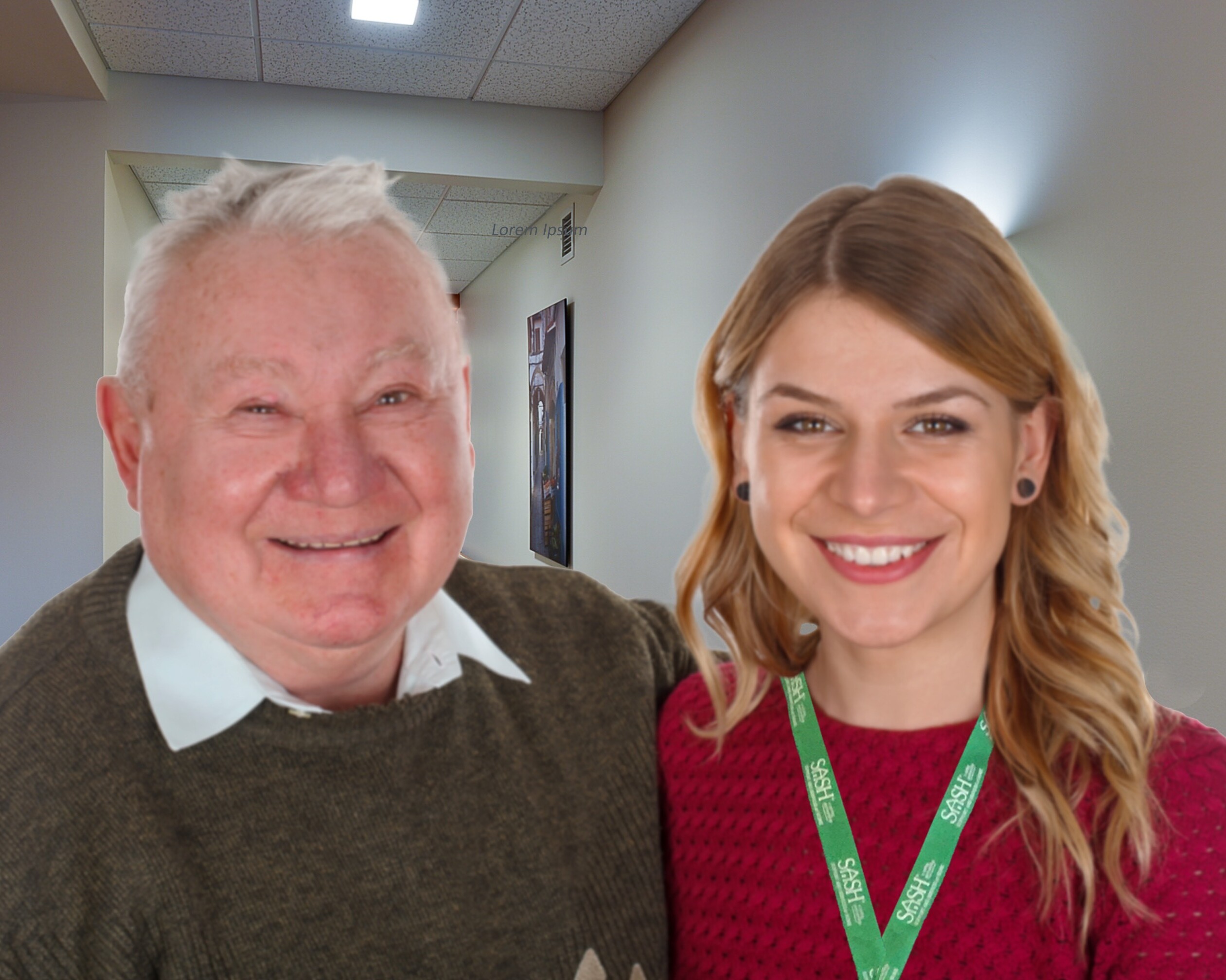
"Larry" has always been a proud and independent man. When health issues made it too risky for him to enjoy simple pleasures such as cooking meals or cheering on local sports teams, finding support was essential to remain independent.
Larry's diabetes and struggles with insulin had led to dangerously high glucose levels. He also had experienced bacterial infections, nerve damage, and severe swelling in his legs, which caused frequent falls and injuries. Larry shared with his SASH coordinator that he used to worry every minute about not knowing who, or if, someone would arrive at his home to help with meals and health care.
Before Larry's situation became overwhelming, his SASH coordinator and the Vergennes SASH team stepped in to provide comprehensive solutions to empower and support Larry. Diana, the SASH coordinator, checked in with him often and reported how he was doing to the team.
Larry was encouraged to take diabetes classes at the nearby hospital, bring his insulin records with him to doctor visits, and have Andrea, his SASH wellness nurse, help him track and report insulin levels. His SASH coordinator, Diana, reduced the risk of falls in Larry's home and found a donated wheelchair so he could safely leave his apartment.
The SASH team also found Larry a "senior companion" volunteer to accompany him to SASH and community events and cook nutritious dinners for him. He was also signed up for Meals on Wheels to receive a healthy lunch daily.
Larry was tremendously grateful for the support he received from his SASH team.
"If I didn't have SASH, I wouldn't be in good shape – I'd be in the hospital much more."
— Larry, Participant
Larry now regularly manages his diabetes and glucose levels. His ankles are noticeably less swollen and are monitored often to ensure infections don't return. He is relieved to have reliable and familiar care through TLC Home Health and nursing. He continues to face challenges but does so confidently, knowing his SASH team is there for him.
Larry's SASH Team (Vergennes, Vermont):
-
Addison County Home Health & Hospice
-
Andrea Masse, SASH Wellness Nurse
-
Diana Rule, SASH Coordinator
-
Jennifer Brission, Case Manager, Central Vermont Area Agency on Aging
-
Jessica Stocker, Care Coordinator, Little City Family Practice
-
Melissa Stockholm, SASH Wellness Nurse
Stroke Success Story
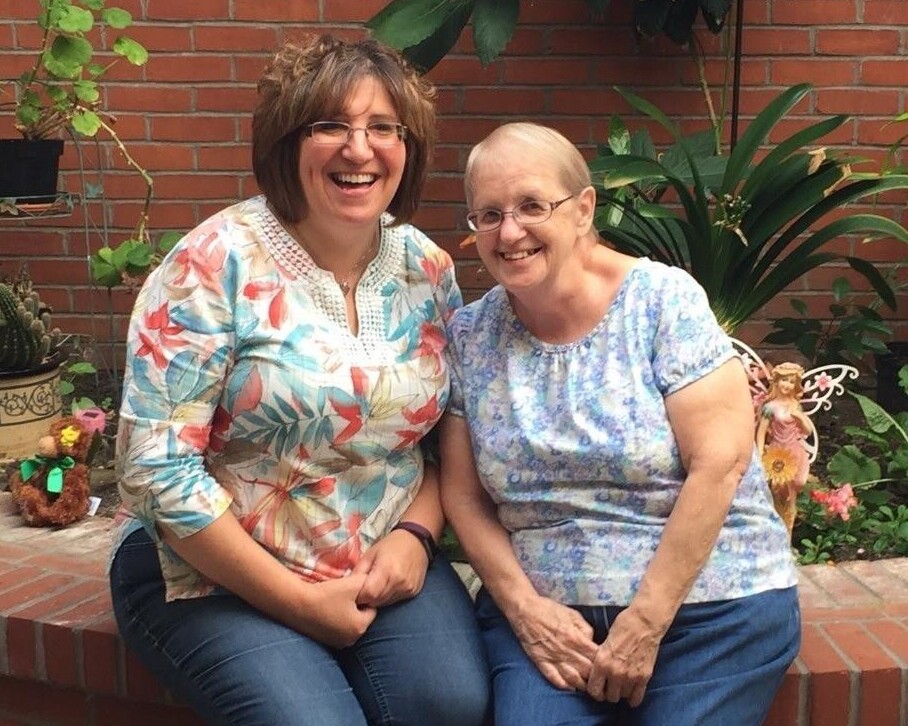
A SASH participant since 2015, Regina Fournier enjoys line dancing, playing Mahjong, sewing, and quilting. She believes it's largely thanks to SASH that she's still dancing and enjoying her other activities.
Regina had just moved to Passumpsic View Apartments, an affordable-housing community operated by RuralEdge Community Development in St. Johnsbury, Vermont, when a neighbor noticed she didn't seem well. The neighbor contacted the SASH wellness nurse, who checked on Regina and found she was having a stroke. The nurse immediately had her taken to the hospital.
As Regina recovered from her stroke, the SASH wellness nurse and SASH coordinator worked closely with their community SASH partners. They ensured Regina would receive services, such as the home health and speech therapy ordered after her hospitalization. The wellness nurse took her blood pressure regularly. SASH staff worked with Regina to develop a healthy living plan. Together they identified strategies for her to stay engaged in recreational activities – or, as Regina puts it, "working with us to figure out what we need to do to keep going."
Several things that keep Regina going are line dancing and sewing, which she has enjoyed for many years. She says, "They helped me get back into doing crafts and sewing ... starting with big needles and eventually working my way down to a finer needle. Now, I can put in a blind hem you'd never notice!"
Regina finds it helpful to have SASH staff available as it gives her "someone to talk to about health questions that come up, which is easy to do because you know the person," she says.
Knowing the person" is something Robin Burnash, the SASH coordinator in Regina's building, says is a significant strength of SASH.
"A big advantage of SASH is it allows you to build relationships with participants and other service providers. Getting to know people fosters trust, so participants feel comfortable telling you if they're struggling with something or if there's a doctor's instruction they don't understand."
— Robin Burnash, SASH Coordinator
In Regina's case, a side effect from her medication caused her stroke. The SASH wellness nurse helped her understand her medications, their potential side effects, and when to ask for help.
SASH also helps address barriers to getting routine care. Transportation can be a significant challenge in a rural state like Vermont. Robin connects participants to an organization that provides rides and can transport people to medical appointments. Providing services like this helps reduce the reliance on emergency rooms for routine care.
In addition to building relationships with participants, SASH also builds relationships among service providers, hospitals, doctors' offices, adult day programs, local government agencies, and home health agencies. "With SASH, the organizations work very collaboratively. There's no feeling of competition," Robin explains. "Everyone shares the load, so no one organization is overwhelmed trying to meet the needs of an individual."
SASH partner organizations around St. Johnsbury meet twice a month to foster connections. These organizations include Northeast Kingdom Human Services, Caledonia Home Health, Northeast Kingdom Council on Aging, and Northeastern Vermont Regional Hospital. The meetings have time for networking, information sharing, and confidential discussion of individual cases.
By building relationships and working together with a focus on participants, SASH helps Vermont's older adults and people with disabilities stay healthy and engaged with life. Regina urges other Vermonters to participate in SASH if they have the opportunity: "Don't wait until you have a stroke to sign up!"
Complex Conditions Success Story

"Pamela," a 61-year-old woman living in a Barre Public Housing Authority (BHA) community called Washington Apartments, has been actively participating in the SASH program for six years.
Pamela has several serious and complex health conditions, including Type 2 diabetes, hypertension, chronic obstructive pulmonary disease, congestive heart failure, depression, anxiety, acute renal failure, and migraines. She has very limited mobility and a history of frequent emergency room visits.
In addition to the SASH coordinator and wellness nurse stationed at Washington Apartments, members of the local SASH team include a nurse from the Central Vermont Medical Center, a counselor with Washington County Mental Health Services, and others. The team meets monthly to coordinate care for Pamela.
Pamela is a motivated participant on her SASH team. She collaborated with team members to create her first "shared care plan" in 2018 and set many goals through this process. Her personal and diverse goals included:
-
Improving her sleep quality by sleeping in bed and not in the recliner chair.
-
Improving the management of her diabetes and weight.
-
Decreasing her fall risk by acquiring and wearing comfortable shoes instead of slippers.
-
Reducing her social isolation and depression.
Pamela's made progress on most of her goals through her determination and the consistent and collaborative support of her SASH team:
-
She has a hospital bed, allowing her to get in and out safely. As a result, she no longer sleeps in her chair and sleeps more soundly and consistently.
-
She partakes in diabetes-education programs and coaching through her primary care provider and SASH wellness nurse. Her diet has improved due to participation in a Farm Share and Healthcare Share program, and her homemaker partners with her to prepare healthy meals. Pamela participates in her Home Health Agency's telemonitoring program. When she misses a weight check, the Home Health Agency reaches out to her SASH coordinator to follow up and provide a reminder. This collaboration has provided more consistent monitoring and follow-up.
-
She's still working on her goal of fitting into shoes but is challenged by fluid build-up.
-
To mitigate social isolation and depression, Pamela has regular social check-ins with her SASH coordinator, who contacts the Washington County Mental Health elder care clinician if there is an exacerbation. Pamela and the team have identified if her depression and anxiety spiral, it often leads to emergency room visits and sometimes in-patient hospitalizations.
The coordinated care provided by the SASH team has been essential to Pamela's progress. The team communicates frequently, and when Pamela's progress wanes from time to time, the team can re-group quickly and set new goals with Pamela to keep moving forward. The support Pamela has is organized, comprehensive, and, most importantly to her, person-centered.
Fall Success Story
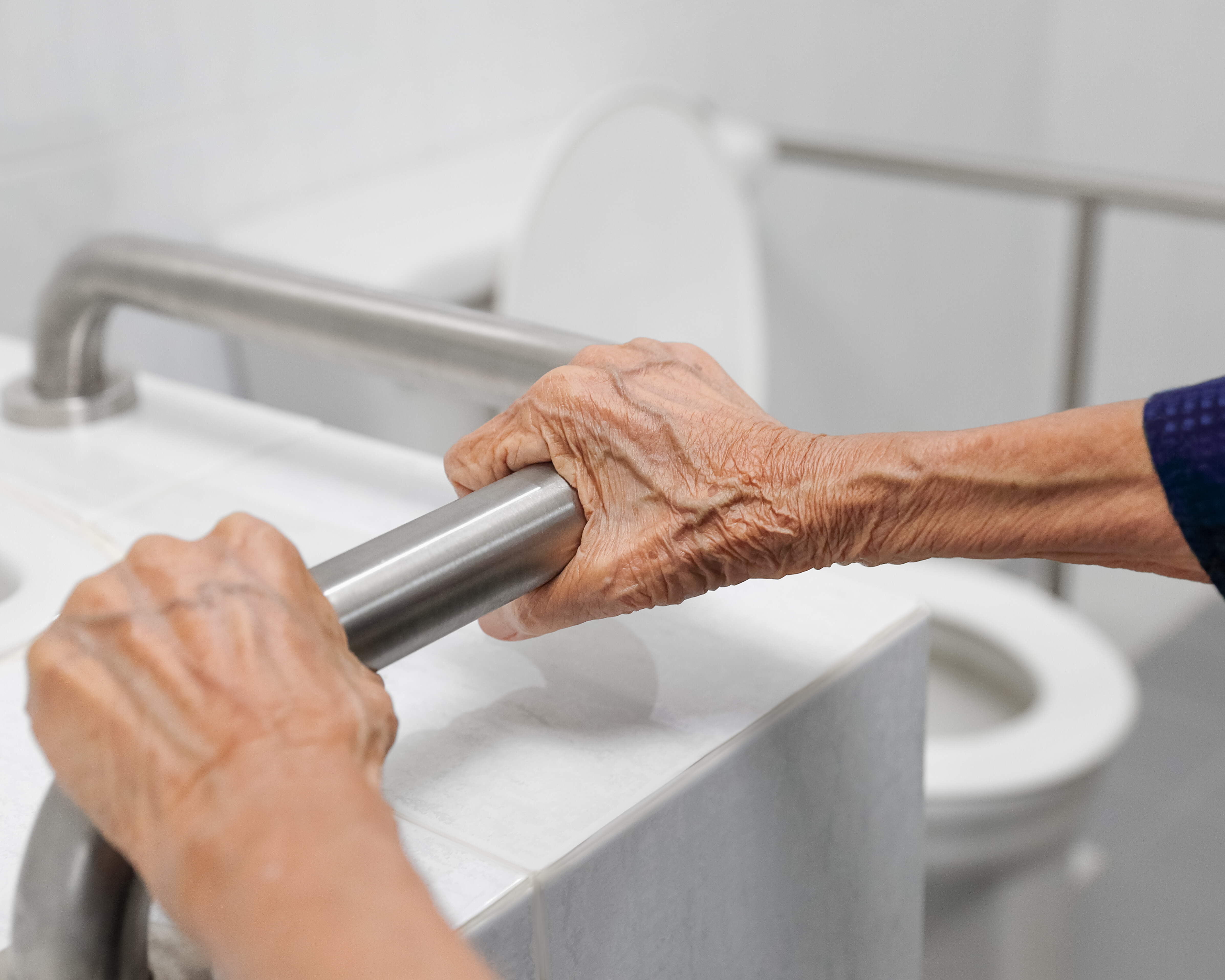
Edith, a strong and independent 81-year-old woman who lived at home, fell while at home and was unable to get to the phone for 12 hours. She wound up in rehab at Grace Cottage Hospital for several weeks. Her doctor was adamant she couldn't live independently at home anymore.
Thankfully, just a couple of weeks prior, Edith's SASH coordinator had met with her to work on her "healthy living plan." Edith's plan included a comprehensive list of supportive people in her life and a transition plan. Edith and Alicia outlined who Edith's SASH team members were, their contact information, and when and why they might be contacted.
This foresight and planning were instrumental following her admission to the hospital. Edith's team members had established a rapport and quickly worked together on a plan to get Edith back home, where she desperately wanted to be.
With the support of her discharge planner, SASH coordinator, power of attorney, and friend, Edith could go home with a plan and safety precautions in place. Her SASH coordinator arranged for Edith to receive a Lifeline® device she agreed to wear 24/7 and "Meals on Wheels" to provide daily balanced meals. Both services strengthened her confidence in remaining at home.
Staff from the community health team, which partnered with SASH, visited Edith at home after her discharge, and her SASH team scheduled caregivers for regular visits. Edith's SASH coordinator completed a cognitive screen with her and shared the results with her doctor, arranged bubble packs for her medications, and recommended ways to reduce her risk of falls, including the installation of railings throughout Edith's home.
SASH also arranged for Edith to visit a health coach to assess her nutritional needs and offer advice. After each visit, SASH team members reported to each other about Edith's well-being.
What happened during Edith's transition back home is an example of how SASH team members work collaboratively to support participants in staying healthy and safe at home.
As a result of the SASH team's collective action and planning, Edith continues to improve and enjoy an independent life at home. She has been scheduled to work with a physical therapist to develop core strength. She has been consistently adhering to her exercises. She's sleeping in her bed again (after some modifications were made) and reports feeling significantly stronger and more balanced.
Thanks to SASH, Edith remains living at home, exactly where she wants to be, and costly assisted living, and nursing home care was avoided.
Edith's SASH Team (Townshend, Vermont):
-
Valley Village
-
Senior Solutions Health Care & Rehabilitation Services of Vermont
-
Visiting Nurse and Hospice for Vermont & New Hampshire
-
Grace Cottage Hospital
-
Vermont Blueprint Community Health Team
COVID Success Stories
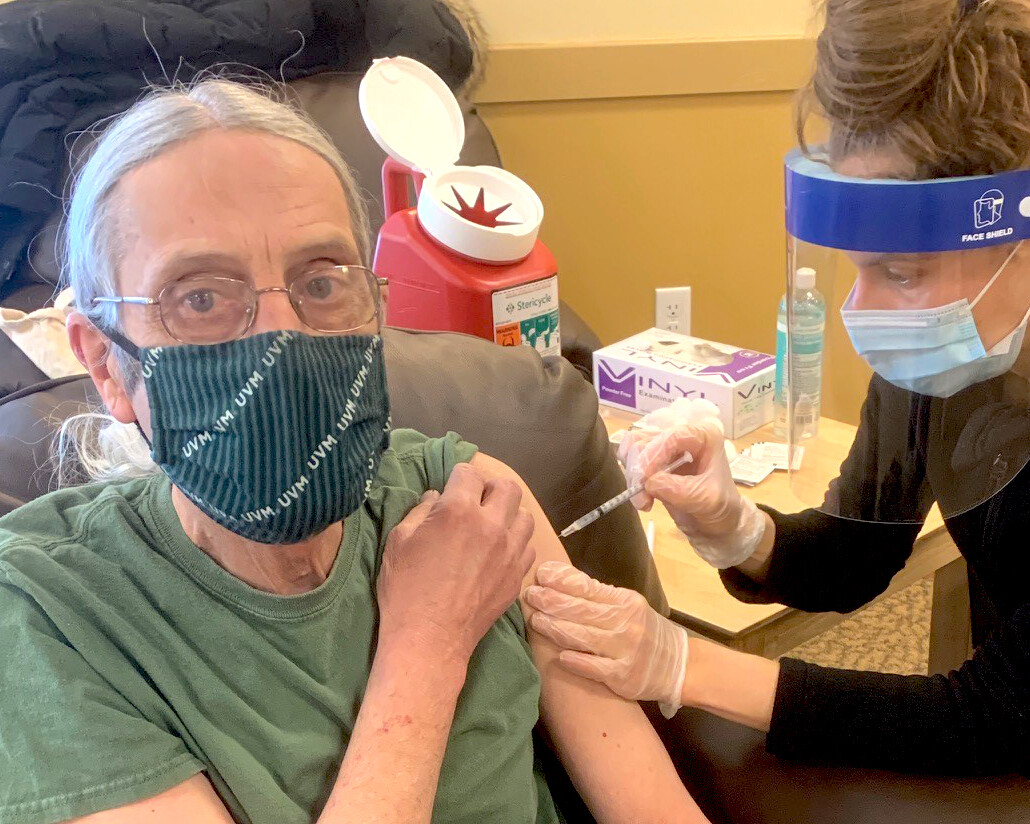
SASH coordinators and wellness nurses have played a critical role in keeping participants safe and connected during the COVID-19 pandemic. Here are some examples of success from around the state.
RUTLAND
The son of an out-of-state SASH participant called the SASH coordinator after becoming concerned about his mother. He had talked to her several times that weekend and said she was confused. He wanted to call an ambulance and have her evaluated at the hospital. As the conversation continued, the SASH coordinator suspected there might be a problem with a recent medication change and convinced the son to hold off.
The SASH coordinator gathered initial information and connected with the SASH wellness nurse. The nurse accessed the participant's medical records online and contacted the pharmacist on record, whose information didn't match what was in the participant's medical records.
The nurse contacted the office of every medical provider and was able to compile an accurate medication list. She coordinated with numerous family members to inform them of the woman's current (and correct) medications. She then donned appropriate PPE and conducted a home visit with the participant, interacting with her from the porch.
The nurse verified the woman's pill box was correctly filled for the week and determined unclear communication from health care providers was the reason for the woman's confusion. Daily follow-ups with the participant confirmed she was taking her medications correctly and was no longer confused.
Thus, SASH helped the participant and the family and made it possible to avoid an expensive and unnecessary trip to the hospital and potential hospitalization.
MONTPELIER
As the coronavirus arrived in Vermont, SASH coordinators and wellness nurses were contacting every participant to design an individual action plan for COVID-19. During one such call, the nurse discovered that a diabetic participant had a painful foot ulcer. She had not sought treatment for fear of contracting the virus.
After further conversation, the nurse determined the participant required immediate medical attention. The nurse convinced the woman she needed treatment and then made the appointment for her. Without SASH's intervention, the ulcer likely would have worsened, possibly leading to hospitalization, surgery, and/or amputation, as well as costly follow-up care.
ST. ALBANS
A worker from the local crisis hotline reached out to the SASH coordinator about a participant experiencing high levels of stress, anxiety, and loneliness related to COVID-19 isolation. The SASH coordinator immediately contacted the individual by phone. She learned the participant was physically okay but potentially at risk for suicide. The SASH coordinator and wellness nurse contacted local partners. They quickly arranged for mental health wrap-around services through local agencies. The person is now stabilized and reportedly is doing well.
MORRISVILLE
The resident-services manager at Copley Terrace reached out to SASH seeking help for a resident who could no longer shop for groceries due to the shutdown of the community transportation service.
Upon learning that the resident had no local family or other support to draw upon, the SASH Coordinator jumped into action, ensuring the participant had essential groceries until the local transportation service was restored. The SASH coordinator continues to follow up weekly with this person.
SOUTHERN VERMONT
A SASH participant whose wife had died a year ago experienced a delayed and traumatic grief response during the early weeks of the pandemic. He had always prided himself on never needing help. Still, the isolation brought on by the pandemic caused buried feelings to rise to the surface. He acknowledged his severe distress at the end of a casual conversation with the SASH coordinator, who quickly connected him with the SASH wellness nurse.
Their weekly, supportive conversations continue to this day. No longer distraught, the participant recently told the SASH coordinator that he would not be here if it weren't for SASH.
